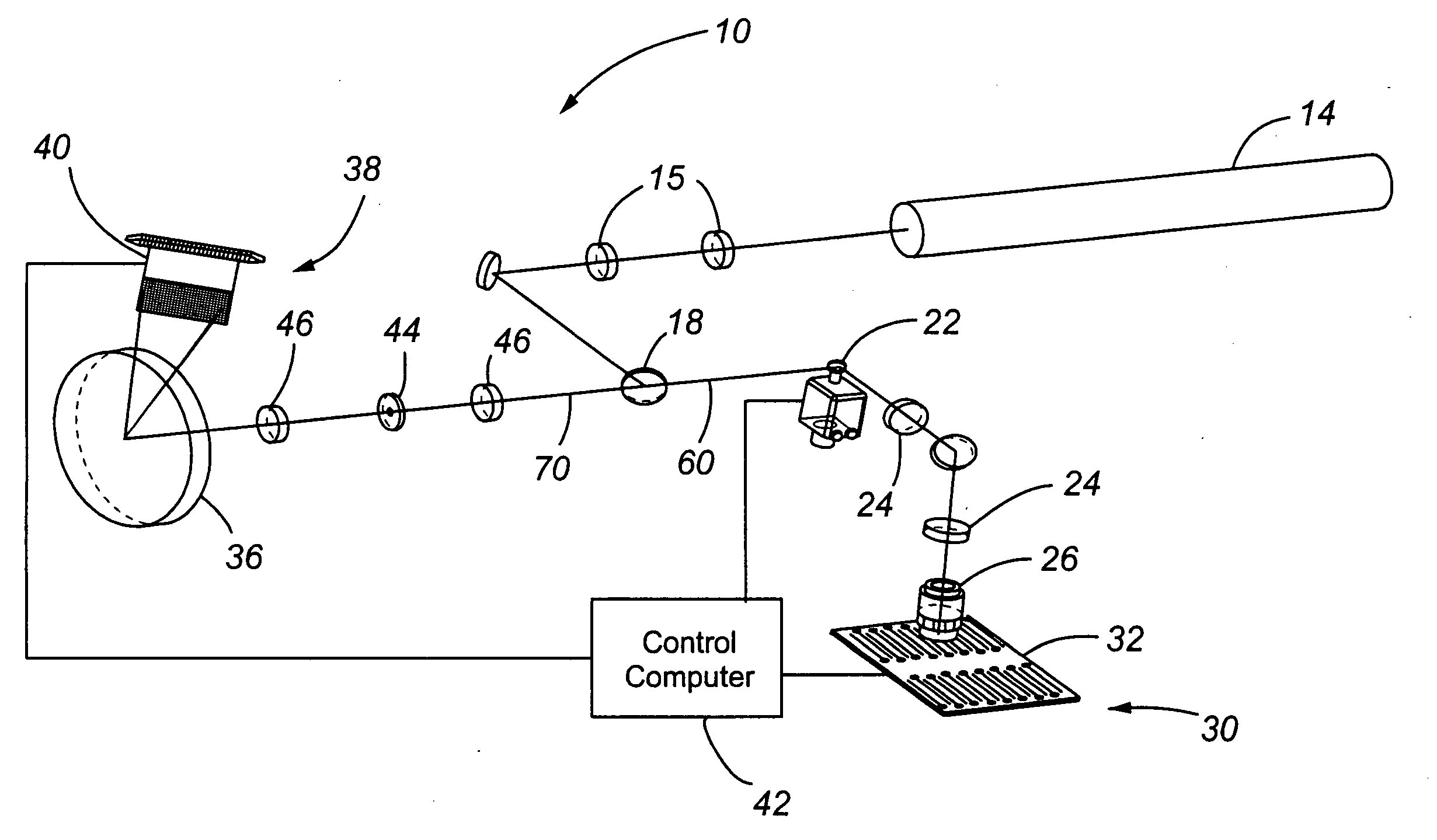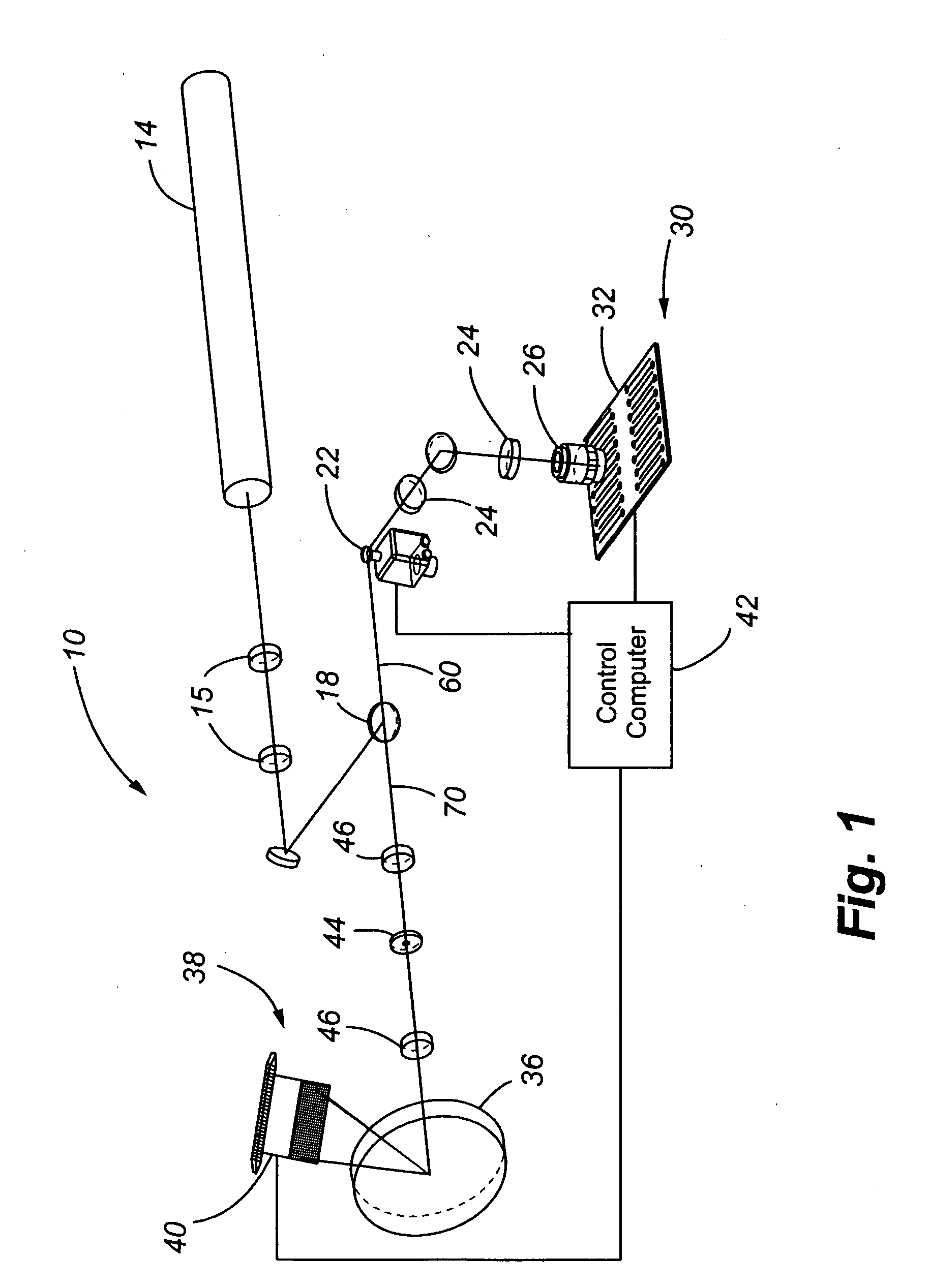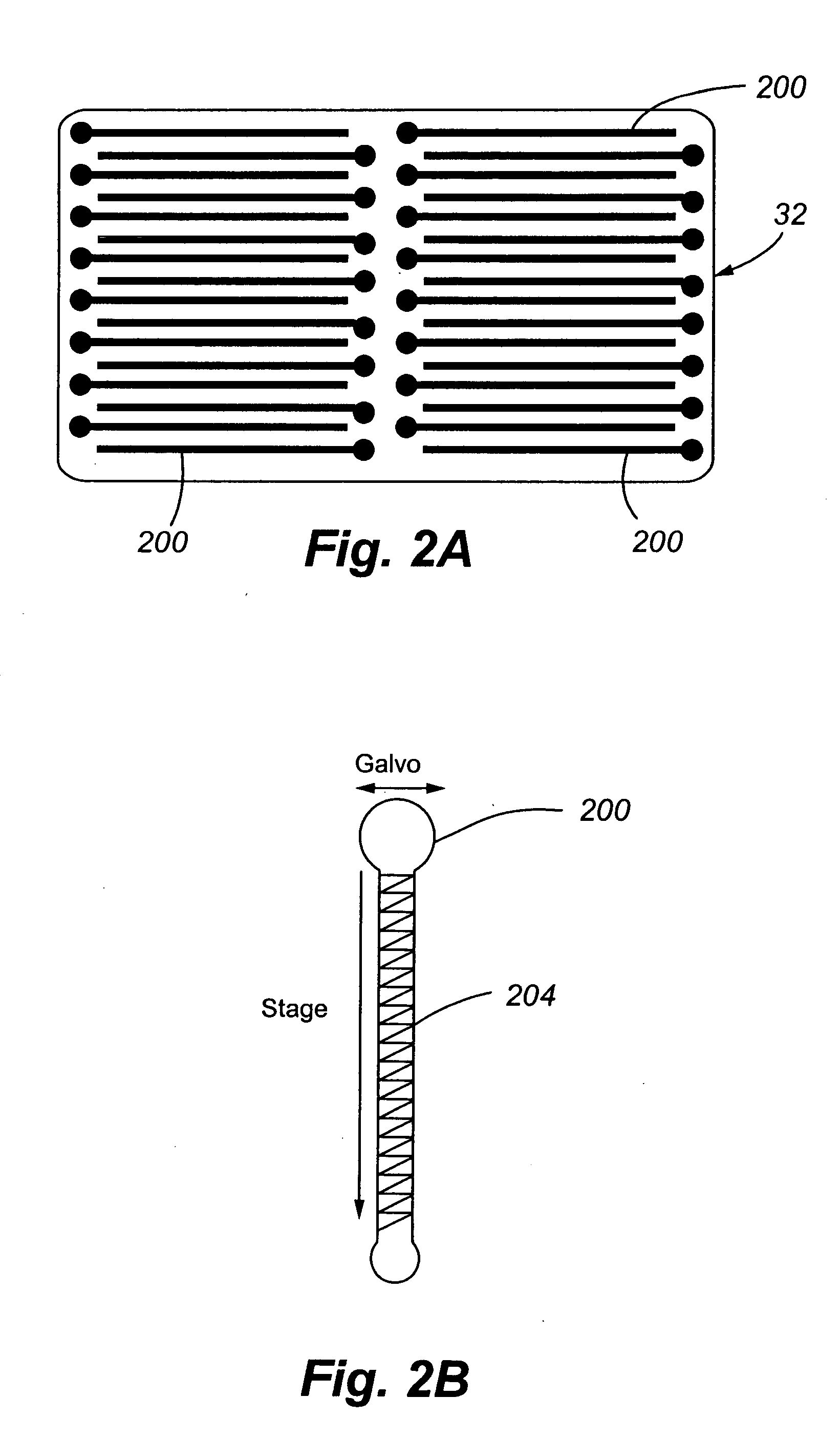Polychromic laser scanning system and method of use
a polychromic laser and scanning system technology, applied in the direction of luminescent dosimeters, optical radiation measurement, instruments, etc., can solve the problems of limited throughput and sensitivity of pmts, requiring high voltage power supplies, and limited to three or four color assays
- Summary
- Abstract
- Description
- Claims
- Application Information
AI Technical Summary
Benefits of technology
Problems solved by technology
Method used
Image
Examples
Embodiment Construction
[0054] The present invention comprises a CCD-based laser scanner that provides spectral flexibility needed for the spectrocopic monitoring of highly multiplexed cellular and particle assays in whole blood or other suspensions. In one embodiment, the present invention comprises a CCD-based microvolume laser scanning cytometer (MLSC) for monitoring cells in whole blood and other suspensions. However, it is to be understood that the present invention has application to monitoring objects or particles other than cells in blood. By way of example and not limitation, the CCD-based laser scanner may be used to monitor non-cell particles in a liquid, such as beads or other man-made particles in a liquid suspension. As further examples, the CCD-based laser scanner may be used to interrogate immunoassays in a buffer, or particles and reporter tags attached to a flat surface, such as microscope slides.
[0055] The present invention allows for the real-time reconfiguration of the number of detec...
PUM
 Login to View More
Login to View More Abstract
Description
Claims
Application Information
 Login to View More
Login to View More - R&D
- Intellectual Property
- Life Sciences
- Materials
- Tech Scout
- Unparalleled Data Quality
- Higher Quality Content
- 60% Fewer Hallucinations
Browse by: Latest US Patents, China's latest patents, Technical Efficacy Thesaurus, Application Domain, Technology Topic, Popular Technical Reports.
© 2025 PatSnap. All rights reserved.Legal|Privacy policy|Modern Slavery Act Transparency Statement|Sitemap|About US| Contact US: help@patsnap.com



